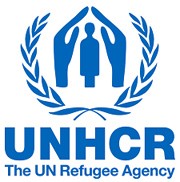UNHCR's protection chief says 1951 Convention remains "as relevant today as it was at the time" as new guidelines released
 Image credit: WikipediaThe United Nations High Commissioner for Refugees (UNHCR) has released new guidelines on claims for refugee status related to situations of armed conflict and violence under Article 1A(2) of the 1951 Convention relating to the Status of Refugees and/or its 1967 Protocol.
Image credit: WikipediaThe United Nations High Commissioner for Refugees (UNHCR) has released new guidelines on claims for refugee status related to situations of armed conflict and violence under Article 1A(2) of the 1951 Convention relating to the Status of Refugees and/or its 1967 Protocol.
The 19-page guidelines can be read here.
UNHCR says the purpose of the guidelines is to provide substantive and procedural guidance for assessing claims for refugee status involving situations of armed conflict and violence, and to promote consistency in the application of the 1951 Convention and regional refugee definitions.
"Situations of armed conflict and violence" refers to situations that are marked by a material level or spread of violence that affects the civilian population, such as violence between state and non-state actors, and violence between different groups in society.
The guidelines are intended to provide legal interpretative guidance for governments, legal practitioners, decision-makers and the judiciary, as well as UNHCR staff carrying out refugee status determination.
The guidelines aim to ensure that states generally consider those fleeing armed conflict and other violent crises as refugees.
Speaking on the release of the guidelines, UNHCR's protection chief, Volker Türk, said on Friday that the 1951 Refugee Convention remains "as relevant today as it was at the time."
Türk explained: "Let's not forget that most situations of violence and conflict specifically target civilians in certain circumstances – they target minorities, they target opposition groups who are in civilian areas. So there is this element of clear linkage between the refugee definition of persecution, conflict and violence. That's what the guidelines are trying to address – to actually show that the refugee definition as contained in the 1951 Convention applies to people fleeing armed conflict and violence. And what we see in the definition today is as relevant as it was when it was crafted in the wake of the Second World War.
"Most people who flee the conflict in Syria, for example, would be recognised under the 1951 Convention. With over 1,000 different armed groups and the absence of state protection, it is clear that there is a compelling case to be made for refugee recognition under the Convention. But, quite frankly, almost each and every conflict that we're dealing with today would make the case for the 1951 Convention."
He continued: "What the new guidelines actually show is that it is not about a broadening of the refugee definition. It is really about explaining and updating our understanding of the definition in today's context. As I mentioned, the drafters of the 1951 Convention knew what it meant for people to flee war and violence, and they knew very well because they came out of the Second World War. They knew what persecution meant because of the atrocities that were committed during this time. They knew what it meant to be a refugee and that understanding is also an understanding that applies today. Because as long as the realities of war, violence, human rights abuses and persecution are not addressed, we will need this definition of refugees as a lifeline for protection. What the guidelines are doing is to bring forward the understanding amongst states and judiciaries that the definition that was drafted then is as relevant today as it was at the time."